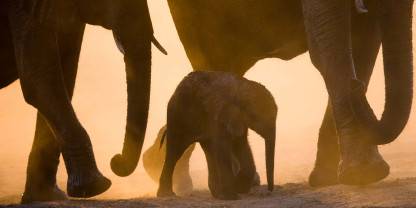Average Expert Rating
Rating Breakdown
Write a User ReviewBig Game Metropolis
Read more
by the tent, hyenas spoiling my sleep with their amazingly loud vocal repertoire right beneath the platform, and one night I spotted a scary little honey badger within inches of my bare feet. Hwange’s a great place to start ticking the animals off your list.The Zimbabwean Giant
Hwange is more than twice the size of Devon (or slightly bigger than Connecticut) and, while most of the camps and lodges are arranged along a strip in the northern half of the park, there are great tracts of wilderness to remind visitors of the immensity of the African bush. You drive across vast areas of elephant-ransacked thornscrub and through vast teak forests (inviolable even to the pachyderm diet), and from time to time come across pockets of incredibly dense wildlife such as the dry-season waterholes at Makalolo Plains where I saw 22 lions (and a leopard) on a single morning’s game drive.
A longer stay in Hwange will give you time to get acquainted with the ever-changing lion dramas – the tales of ‘pride and prejudice’ that
Read more
the park’s ace guides can recount through an in-depth knowledge of the predators’ social lives. You’ll still hear tales of the famous Cecil (whose roar is said to have been so tectonic that it could shake the vehicle) and Hwange is known for its powerful lion prides – such as the Nehimba Seeps pride that has become famous for preying on elephants.Wankie National Park (as it was known then) was gazetted in 1928 in an area lacking permanent water. The park’s elephant debacle can be traced back to the first boreholes. Since then elephants have had no need to migrate in pursuit of water. Contrary to popular myth, elephants do forget and even the oldest matriarch no longer knows the ancient migration trails and the impact of vast elephant herds can be seen everywhere.
‘There were less than 1000 elephants in this area in the 1920s,’ wrote Dick Pitman in ‘Wild Places of Zimbabwe’. ‘Today probably 13,000 or more...as it stands Wankie probably now supports its viable maximum number of elephant.’
Pitman wrote those words in 1980. Now, more than 40 years later, Hwange attracts up to 50,000 elephants in the dry season, and the landscape, the herds themselves and other species are all starting to feel the impact.
Zimbabwe’s Top All-round Safari Destination
The public sector of the park also provides rewarding viewing for big cat enthusiasts, with lion and cheetah being especially visible in some areas. Like Kruger, Hwange is unusually well suited to self-drive safaris, thanks to the affordable network of overnight rest camps, campsites and hides. Another great feature of this park is its proximity to Victoria Falls, which means the two can easily be combined on a joint safari.
My favorite part of Hwange is the exclusive private concessions operated by the likes of Imvelo and Wilderness in the far south. We have visited these on several occasions and always enjoyed game viewing to rival most of East Africa’s better-known parks. This is also where you will find Ngamo Wildlife Sanctuary, a well-wooded tract of community land that buffers the national park and has been restocked with white rhino, which can be tracked on foot.
A Wildlife Extravaganza in an Easy Game-Viewing Landscape
Hwange is Zimbabwe’s answer to a typical African game reserve: unspoiled bush teeming with all the animals people expect to see on safari. But because of the relative lack of visitors in recent years, it’s without the normal camera-clicking crowds. I’ve had some incredibly rewarding game-viewing experiences here, especially along ‘Ten-Mile Drive’ from Main Camp, where I’ve seen most of the park’s major mammals including elephant, lion, cheetah, buffalo and hyena, and plenty of the ubiquitous warthog and impala. The Nyamandlovu Pan is a special place too. In the dry season it can be crusted and cracked, and the grassy plains yellow and parched, but I once remarkably watched at least a dozen species of grazing animals here at the same time, and it wasn’t long before a pride of hungry lions appeared to investigate the relative ‘smorgasbord’ of choices.

